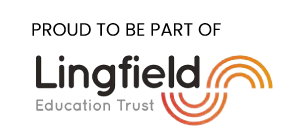How do we approach Art at Northwood?
At Northwood we believe that creativity, challenge and inspiration are fundamental to the development of every child. Our Art Curriculum aims to develop a deep understanding and appreciation of the role creativity has played culturally and historically, through an exploration of key artists and craftsmen through time. We will provide high quality teaching and learning in drawing, painting and sculpture to enable children to invent and create their own works of art and design.
Children will also have regular opportunities to explore and develop a wide range of skills and techniques to express their ideas creatively across the curriculum. Please browse the booklet below for more information on the different artists and topics we look at throughout our Art curriculum.
Key stage 1
Pupils should be taught:
- To use a range of materials creatively to design and make products.
- To use drawing, painting and sculpture to develop and share their ideas, experiences and imagination.
- To develop a wide range of art and design techniques in using colour, pattern, texture, line, shape, form and space.
- About the work of a range of artists, craft makers and designers, describing the differences and similarities between different practices and disciplines, and making links to their own work.
Key stage 2
Pupils should be taught to develop their techniques, including their control and their use of materials, with creativity, experimentation and an increasing awareness of different kinds of art, craft and design. Pupils should be taught:
- To create sketch books to record their observations and use them to review and revisit ideas.
- To improve their mastery of art and design techniques, including drawing, painting and sculpture with a range of materials [for example, pencil, charcoal, paint, clay].
- About great artists, architects and designers in history.
DT
How do we approach Design and Technology at Northwood?
Our Design and Technology curriculum is a project based approach which involves designing a product for a user and for a purpose.
The Six Principles for Design and Technology at Northwood:
- User
- Purpose
- Functionality – it should work in some way.
- Innovation – we think of new ideas.
- Design decisions
- Authenticity – we make ‘real’ design and technology products not replicas and reproductions of something
At Northwood we think in an ‘iterative’ way.
We have thoughts and then actions and we are not worried about changing things along the way as we work through the projects.
At Northwood we are ‘innovative’ and ‘take risks’ through our projects.
- We seek to generate new ideas.
- We make products that really work.
- We dare to think differently.
- We test out our ideas.
- We’re not always sure what is going to happen as we work through our projects.
Key stage 1
When designing and making, pupils should be taught to:
Design
- design purposeful, functional, appealing products for themselves and other users based on design criteria
- generate, develop, model and communicate their ideas through talking, drawing, templates, mock-ups and, where appropriate, information and communication technology
Make
- select from and use a range of tools and equipment to perform practical tasks [for example, cutting, shaping, joining and finishing]
- select from and use a wide range of materials and components, including construction materials, textiles and ingredients, according to their characteristics
Evaluate
- explore and evaluate a range of existing products
- evaluate their ideas and products against design criteria
Technical knowledge
- explore and use mechanisms [for example, levers, sliders, wheels and axles] in their products
- build structures, exploring how they can be made stronger, stiffer and more stable
Key stage 2
When designing and making, pupils should be taught to:
Design
- use research and develop design criteria to inform the design of innovative, functional, appealing products that are fit for purpose, aimed at particular individuals or groups
- generate, develop, model and communicate their ideas through discussion, annotated sketches, cross-sectional and exploded diagrams, prototypes, pattern pieces and computer-aided design
Make
- select from and use a wider range of tools and equipment to perform practical tasks [for example, cutting, shaping, joining and finishing], accurately
- select from and use a wider range of materials and components, including construction materials, textiles and ingredients, according to their functional properties and aesthetic qualities
Evaluate
- investigate and analyse a range of existing products
- evaluate their ideas and products against their own design criteria and consider the views of others to improve their work
- understand how key events and individuals in design and technology have helped shape the world
Technical knowledge
- apply their understanding of how to strengthen, stiffen and reinforce more complex structures
- understand and use mechanical systems in their products [for example, gears, pulleys, cams, levers and linkages]
- understand and use electrical systems in their products [for example, series circuits incorporating switches, bulbs, buzzers and motors]
- apply their understanding of computing to program, monitor and control their products



